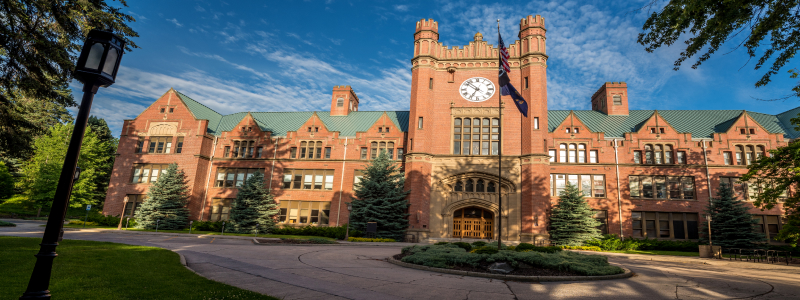Looking at Historic Buildings from a Facility Management Lens

There are dozens of vital and vibrant universities and hospitals built more than 100 years ago that are still operating today. Historical buildings have challenges associated with documenting existing equipment and shut-off locations. Read more insights in this blog post where experts weigh in.
Looking at Historic Buildings
from a Facility Management Lens
by ARC Facilities
Jun 28, 2023
There are dozens of vital and vibrant universities and hospitals built more than 100 years ago that are still operating today. Historical buildings have challenges associated with documenting existing equipment and shut-off locations.
“Our oldest building is Holloway Hall which is the original Salisbury Normal School that opened in 1925,” said Nancy Birch, Service Center Manager, Department of Physical Plant, Salisbury University. “We are about to celebrate our 100th . The building layout is unique and it’s difficult to renovate without serious monetary and logistical considerations. Since it’s an active building with our main auditorium, a social hall as well as the President’s Office, scheduling normal maintenance, much less renovations, is a complex process involving many departments.”
“Shut-offs and infrastructure additions almost always end up being a detective story to find what you're looking for,” said industrial real estate broker Tom Mancuso.
Also, many historic buildings initially lacked amenities that we consider standard today like HVAC, elevators, and fire suppression systems, explained Samantha Howell, Director of Sales, EMCOR Services Fagan.
“For example, Coil fired boilers the size of a train cars and elevators designed for freight, not humans. Because of the sheer size of the equipment, often these buildings were built around the boiler and elevator systems. It takes a unique approach to replacement simply because there are no doorways large enough to get the old equipment out,” she said.
“Existing industrial, commercial, and institutional buildings are an integral part of the fabric of our communities, but they do require a little more thought in their operations,” said Mancuso.
Regarding equipment maintenance, Mancuso said that deciding which legacy systems to keep or replace is part of the process. Finding quality vendors to service older systems such as elevators and fire pumps is also not easy. He added that regarding building blueprints, that they’re often difficult to find and need to be recreated by new building owners.
Facility teams may have to remove walls or lift ancient equipment through roofs, which are not ideal due to the increased costs associated with removal nor for preserving the integrity of the façade which is often a large reasoning for the historic status.
Many contractors believe that the struggle with historic buildings is that people want to enjoy them and appreciate them for their uniqueness and charm but expect them to
function like a building built today. People don’t want to take the stairs and they want air conditioning while taking in all the aesthetics that make these buildings landmarks.
“The best way to preserve any building is to keep it active and useful while being sensitive to its unique personality,” said Mancuso.
Here’s a checklist about the care and maintenance of older buildings:
- Make sure your equipment inventory database, including chillers, air handlers, pumps, water heaters, cooling towers is current.
- Look at the condition of all other services/systems that may benefit from being integrated into a new system, such as electrical and fire suppression systems.
- Take the campus tour. Observe what others are saying about the state of your buildings.
Many facilities teams are looking closely at software for mapping equipment locations, shut-offs, and updating building plans.
With artificial intelligence, machine learning, and optical character recognition, it’s possible to extract intelligence from decades-old blueprints. Best of all, technicians in the field can access all this info with their smart devices and share it with outside vendors, and construction teams responsible for renovations.
ARC Facilities works closely with healthcare, higher education, and governments who own hundreds of buildings 50+ years or older. Our team spends many hours examining aging equipment, photographing assets, and helping facility managers update equipment inventory databases. If there are emergencies, such as floods or power outages, building plans, exits, and entryways, can be instantly shared with first responders – providing a level of safety and security for all those who live, learn, and work in older buildings.


